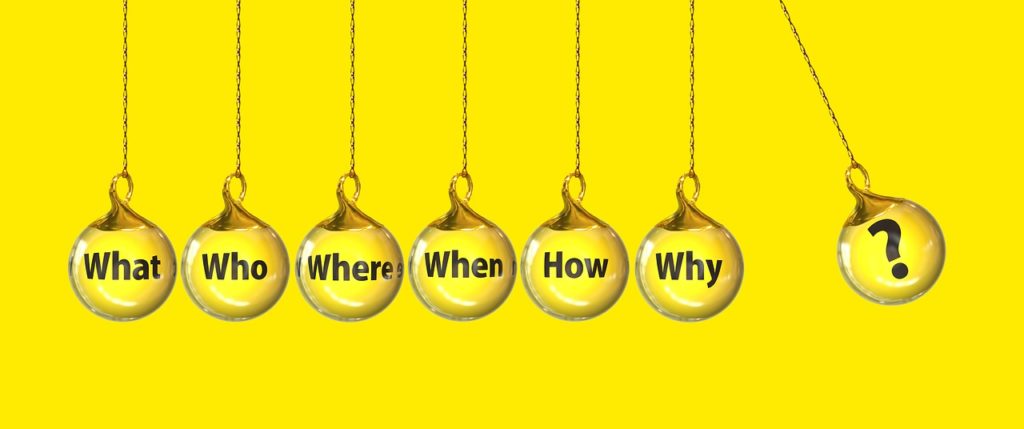Ask the Good Questions
0 comment
In Governance as Leadership: Reframing the Work of Boards, Chait and his colleagues identify the three modes of governance that lead to high performing boards. We are remiss, however, in thinking that the three modes of performance—fiduciary, strategic and generative—that Chait et. al. identify as essential for high performance should be reserved for improving board performance. Each is equally important for improving organizational and programmatic performance. Thus, we must not limit these three modes to our boards, but be just as intentional in using them in our daily work and beyond.

Regardless of where these three modes of behaving should happen, there are two things that are central to their success. First, the individuals involved must have the ability to operate in each mode. And, second, we must know how to ask the right questions.
Rather than talk about the right people on the bus, let’s frame the first point as having the right skills on the bus. Not everyone has the ability to operate in two of these modes, let alone all three. Thus, if we want to get the right skills in the room, we are going to have to be discerning and intentionally determine the modes in which each individual can operate and how well they perform in each.
Visualize a funnel and you will see the challenge that lies in building a solid team with the capacity to really take advantage of working in all three modes. Experience has shown that most can operate, and are comfortable doing so, in a fiduciary mode—the top of the funnel. (This is not the same as saying they are good at it, though.) Fiduciary is like we were taught to color: stay within the lines, the box, the circle; follow the lines to their logical point, etc. It is about crossing t’s and dotting i’s. It is logical and tactical, and, if done well, good at maintaining the status quo.
Strategic, however, moves us down into the funnel because it takes many out of their comfort zones and they often struggle to differentiate between strategy versus tactics. Too many people feel more comfortable tackling the “how”–how something will get done–rather than the “what”–what should we be doing going forward, stretching for? It requires thinking beyond what is currently being done.
Too often, folks see being strategic as problem solving the operations rather than creating the goals and vision for the future. Thus, they think they are being strategic when they are not. In addition, being strategic requires reliance on data gathered from sources beyond one’s own brain, or even the group of brains around the immediate table.
Unfortunately, too few are comfortable with data at all, while others only have a limited capacity to process and integrate data. And then there is the generative mode, the locus where the fewest are comfortable, and yet the essential mode where the shackles of the boxes and status quo are thrown off, creativity emerges and real innovation happens.
Answers to what should we be doing and what is our vision for the next several years take off, the linear path is discarded, and new possibilities are envisioned. It is preferential that these modes not be present themselves in a linear way, that ideas are not handed from fiduciary through to strategic to generative, but that individuals operate in multiple modes filtering ideas through those modes all at once, and then that groups do the same. Finding individuals who have the skills and comfort to operate in multiple modes is how we get to the narrowest part of the funnel.
Second, is recognizing the power of asking good and right questions. Doing all the work to ensure the right skills are on the bus is worthless if the work of groups is not structured to allow these modes to “come out,” play together and flourish.
Good questions are not simply asking things like “Is this good?” or “What do you think of X” or “What should we do about Y?” Good questions are those that force the dialogue to go deeper and broader, and really push the strategic and generative modes of thinking. Good questions probe different scenarios, give people two and two and ask them how many different ways they can add them up to get anything but four, challenge folks to push aside what has always been and think about new ways of doing business.
It might be as simple as asking if we were to start all over brand new tomorrow, doing nothing as we currently do things, what would we look like? Or asking every member of the group to come with a never been tried (by your group) way of addressing X, thereby forcing people to do some research or creative thinking on their own. Or playing a mental version of a child’s mix and match toy, taking different issues and mixing up different solutions to come up with a unique shape all of its own. While who, what, where, when and why still remain the basics of a good reporter’s story, people sitting around a staff or board table are not writing a news story; they are trying to do the best job possible of serving clients and fulfilling those mission promises.
The opinions expressed in Nonprofit University Blog are those of writer and do not necessarily reflect the opinion of La Salle University or any other institution or individual.
